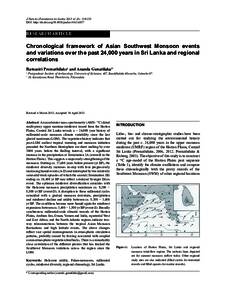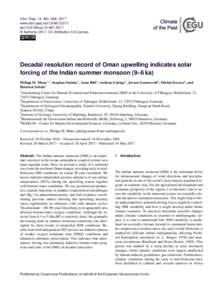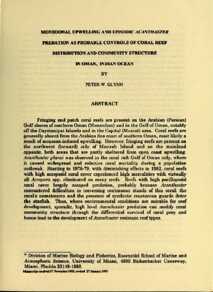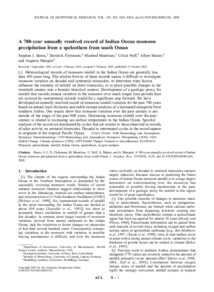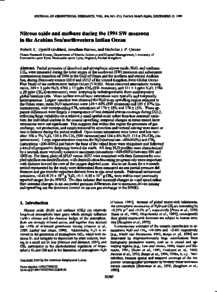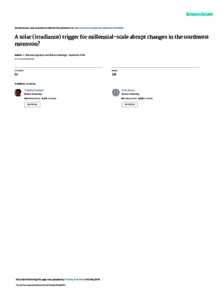Document
Chronological framework of Asian Southwest Monsoon events and variations over the past 24,000 years in Sri Lanka and regional correlations.
Identifier
DOI: 10.4038/jnsfsr.v41i3.6057
Contributors
Gunatilaka, Ananda., Author
Publisher
National Science Foundation.
Gregorian
2013-09
Language
English
English abstract
An accelerator mass spectrometry (AMS- 14C) dated multi-proxy upper montane rainforest record from the Horton Plains, Central Sri Lanka reveals a ~ 24,000 year history of millennial-scale monsoon climate variability since the last glacial maximum (LGM). The vegetation history indicates that post-LGM earliest tropical warming and monsoon initiation preceded the Northern Hemisphere ice-sheet melting by over 3000 years before the Bolling interval, with a significant increase in the precipitation at Termination 1A (event-B in the Horton Plains). This suggests a major early strengthening of the monsoon. Starting ca. 17,600 years before present (yr BP), the rainforest diversity increases in-step with four progressively increasing humid events (A-D) and interrupted by two relatively semi-arid/weak episodes of which the second (Termination 1B) ending ca. 10,400 yr BP may reflect a delayed Younger Dryas event. The optimum rainforest diversification coincides with the Holocene monsoon precipitation maximum ca. 9,200 -8,800 yr BP (event-D). A disruption to these millennial cycles coincided with a gradual monsoon downturn, precipitation and rainforest decline and aridity between ca. 8,100 - 3,400 yr BP. The conditions became more humid again for rainforest expansions between ca. 3,400 - 1,500 yr BP (event-E). Broadly synchronous millennial-scale climatic records of the Horton Plains, Arabian Sea, Oman, Yemen and India, equatorial West and East Africa, and the North Atlantic regions indicate two-way teleconnections between the tropical Asian Monsoon fluctuations and high latitude events. The above changes reflect vast spatial rearrangements in atmospheric circulation patterns, probably caused by forcing associated with coupled ocean-atmosphere-vegetation feedbacks. There is a remarkably close correlation of the different proxies that has tracked the Southwest Monsoon variations across the region since the LGM.
Member of
ISSN
1391-4588
Resource URL
Category
Journal articles

